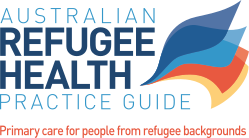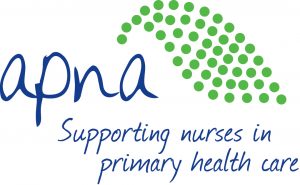People living with disabilities
Table of contents
Key Points
- In recent years there has been an increase in the number of people from refugee backgrounds settling in Australia who are living with a disability
- Rapid specialised assessments and advocacy may be needed to promote early referral and access to disability services.
- Cost of specialised assessments should be minimised given the financial constraints faced by recently arrived people from refugee backgrounds.
- For eligibility and planning of NDIS services, assessments must include detailed information on the person’s functionality, not just a diagnosis.
- Cultural considerations may mean that families are less accepting of outside help, including respite care. They are unlikely to be aware of available support services and concepts of care, and of the notions of rights for people who are living with a disability.
Overview
Since 2012, a streamlining of health waiver provisions for offshore Humanitarian entrants has seen an increase in people of refugee background living with a disability settling in Australia. Clinical assessment, service access and access to aids and equipment can be complex for recently arrived refugee children, adolescents and adults with disability.
The concurrent rollout of the National Disability Insurance Scheme (NDIS) has increased this complexity. The National Disability Insurance Scheme (NDIS) is administered by the National Disability Insurance Agency (NDIA). The NDIS provides support to people with disability and to their families and carers. Support is goal-oriented, with a focus on community participation and accessing mainstream supports. The process of applying for and accessing the NDIS should be explained to the patient/patient’s family.
Approach to care
The approach to care will be dependent on age and type of disability.
- In the case of children, a good perinatal and developmental history, as well as history of any severe illness and current nutritional status, can be very informative.
- In some cases, parental consanguinity may be relevant to enquire about; however, this needs to be done with great sensitivity, due to negative attitudes that families may have already faced here.
- A thorough physical, developmental and mental state examination (see Refugee health assessment) (See Children and Adolescents), with a focus on the person’s ability to function in day to day tasks and in general, such as work ability, will be important for completing the NDIS referral form, and will assist other health providers with their assessments.
- Specialised assessments will be needed to promote early access to disability services. This may include referral to a dedicated adult or paediatric disability doctor or team, psychometric testing, an occupational therapist assessment and/or other needs depending on age and type of disability. The clinician may need to advocate with the disability team to ensure that assessment and access to required services is timely.
- Individuals with disabilities may have never had a formal diagnosis. Specific tests may be needed to define the condition, and in some cases to inform parents of a need for genetic counselling regarding future children. These tests may need to be guided by seeking advice from experts such as developmental paediatricians or an adult disability team.
- Case management is available for newly arrived refugees/families with complex needs. See: Humanitarian Settlement Program, Specialised and Intensive Services
- Refugee Health Nurses and Refugee Health Services will be able to recommend relevant referral pathways and low-cost services.
- Specific information can be gained from relevant disability agencies, depending on the type of disability. Examples include services for people with autism, Down syndrome, hearing impairment and visual impairment. There may also be specific disability services to assist those from certain Culturally & Linguistically Diverse backgrounds.
- Diagnosis and assessment are supported via Medicare through the Better Start for children with disability initiative – MBS item 137 (specialist) and MBS item139 (GP) to determine eligibility for the Better Start program (translated information). However these initiatives are superseded when an application for NDIS access is submitted. A pathway via NDIS is the Early Childhood Early Intervention Approach (ECEI)
Considerations
Centrelink and the NDIA will not accept overseas medical reports at this time, although they may be included as supplementary documentation.
Equipment needs may be urgent, with temporary options (e.g. though NGO/charities and some settlement services) needing to be found before the NDIS or other disability services commence. In some states, community health centres may provide equipment loans.
Access to interpreters for the assessment process and preparing a plan for NDIS support is not free currently. TIS National is however available free for participants to access funded supports in their NDIS plan.
Links
National Ethnic Disability Alliance (NEDA)
Australian Government Hearing Services Program (if over 65)
Translated NDIS information and resources
- Glossary of NDIS and disability terms (Centre for Culture, Ethnicity and Health)
- ‘Understanding Disability in Australia’ and ‘What is the National Disability Insurance Scheme?’ (Amparo Advocacy)
- Translations available: Arabic, Bahasa Indonesian, Bengali, Bosnian, Burmese, Simplified and traditional Chinese, Croatian, Dari, Dinka, Farsi, French, Greek, Hazaragi, Hindi, Hmong, Italian, Japanese, Karen, Korean, Kurdish Kurmanji, Macedonian, Nepali, Rohingya, Samoan, Somali, Spanish, Serbian, Swahili, Tagalog, Tamil, Thai, Tongan, Turkish, Vietnamese, Auslan
- NDIS Information in Languages other than English (NDIA)
- Health Translations Directory – search by keyword or language
NDIS information and resources for service providers
- A range of useful resources can be found here: Royal Children’s Hospital Melbourne – Immigrant Health Clinic
- Checklist regarding eligibility for NDIS
- Information for parents of children 0-6 years, about Early Childhood Early Intervention
- Key components of a support letter (Royal Children’s Hospital, Immigrant Health Clinic)
- NDIS Toolkit for General Practitioners (Brisbane South Primary Health Network)
References
Hotton, P., Raman S, Brown T. Developmental disability in refugee children and youth in South Western Sydney: double jeopardy. Journal of Paediatrics and Child Health, 2015. 51: p. 7
Refugee Council of Australia. Supporting humanitarian entrants with disabilities – National Settlement Policy Network Teleconference 2014. Available at: https://www.refugeecouncil.org.au/r/spn/140508-SPN.pdf
Diversitat Disability Findings Report 2016. Available at: www.pavetheway.org.au/sites/pavetheway.org.au/files/documents/CALD%20in%20NDIS%20launch%20site%20Diversitat_Disability_Report.pdf




